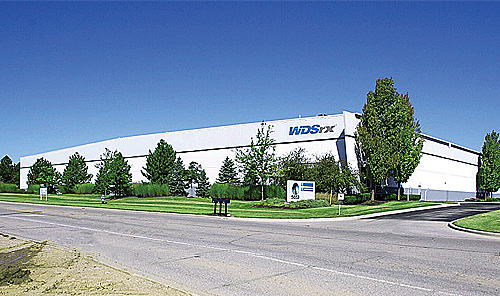Front Line: Inland Ports Spur Distribution Growth
Locations in the middle part of the country provide an alternative to coastal seaports while providing quick intermodal connections to the nation’s interior.
Q2 2020

Distributing to the Medical Community
In Columbus, Rickenbacker Inland Port — with its Rickenbacker Global Logistics Park — is particularly providing value during the COVID-19 pandemic by offering a platform that connects the area’s logistics/distribution community with the healthcare industry, to which it supplies critically needed medical equipment. Assets at the inland port include an international cargo airport, rail intermodal facility, CSX and Norfolk Southern (NS) railroad service, and a U.S. foreign-trade zone.
“Twin-Med and Woodfield Distribution Services (WDSrx) are two of several medical distribution companies that have located to the Columbus/Rickenbacker area over the last few years to take advantage of the region’s logistics benefits,” revealed Sarah McQuaide, spokesperson for the Columbus Regional Airport Authority.
WDSrx President Adam Runsdorf explains that the company decided to open a distribution center (DC) in Columbus in 2018 because from that location WDSrx can reach a greater population within a 10-hour drive than from any other location in a major metropolitan area in the country. The expansion, he says, also supports the company’s strategic plan to develop key locations in pharmaceutical hubs around the U.S.
A Bi-State Inland Port
The array of logistics resources catalyzed by KC Smartport in Kansas City illustrates the potential for regional development of integrated intermodal systems, inland ports, and logistics parks. The area currently has four intermodal parks, with another intermodal distribution project being developed.
Rail lines are interested in investing in inland terminals where they can extend their services deeper into customer supply chains. “The rapid growth of e-commerce has fueled development of warehouses and distribution centers, specifically with U.S. inland-port markets such as Kansas City,” reports Chris Gutierrez, president, KC Smartport. He stresses how inland ports like KC Smartport give companies access to land and buildings at lower prices and operating costs than most crowded coastal port cities. “Many manufacturers and distributors bring product via rail inbound to the inland port, thereby saving on transportation costs and potentially traffic delays,” he adds.
Making Regional Rail Connections
Rail lines are interested in investing in inland terminals where they can extend their services deeper into customer supply chains. A good example is BNSF Railway’s most modern logistics park, the Logistics Park Kansas City (LPKC). With 1,700 acres, LPKC is the largest intermodal facility in the Kansas City market. Tenants include Kubota Tractor Corporation, Horizon Global, UPS, Amazon, and Jet.com.
The St. Louis Regional Freightway emphasizes that region’s assets, including being home to one of America’s largest inland ports; four interstates; five airports; and six Class I railroads. Last year, St. Louis Regional Freightway and Georgia’s Port of Savannah, unveiled a partnership to create stronger rail connections between the two locations, effectively creating an inland port that will enable shippers using the fast-growing container port to distribute products more easily to interior markets. The Freightway bills it as “a new connection between the St. Louis region and the largest single-terminal container facility in the Western Hemisphere.”
“I cannot overstate the potential of this new partnership and the opportunities it can create to develop stronger links between our region’s world-class freight capabilities and national and global supply chains,” says Mary Lamie, Freightway’s executive director.
As part of a $3 billion program to increase containerized cargo capacity, Georgia Port Authority officials are looking to develop a $220 million on-terminal rail facility, which can increase annual capacity to one million containers a year. They refer to the project as the Mid-American Arc. With such expanded capacity, planners hope for faster and more frequent CSX and NS rail service between the two locations. Both railroads have intermodal yards in the St. Louis area. Economic development officials see the project as offering big potential for distribution space for both St. Louis and Savannah, Georgia.
Project Announcements
Ohio Lumex Expands Solon, Ohio, Operations
12/26/2025
Calgon Carbon Corporation Expands Pittsburgh, Pennsylvania, Operations
12/25/2025
Cascades Expands Eau Claire, Wisconsin, Operations
12/25/2025
P.C. Campana Plans Vicksburg, Mississippi, Production Operations
12/25/2025
Midwest Equipment Manufacturing Expands Maysville, Kentucky, Operations
12/25/2025
Stord Expands Hebron, Kentucky, Warehouse Operations
12/25/2025
Most Read
-
The Workforce Bottleneck in America’s Manufacturing Revival
Q4 2025
-
Rethinking Local Governments Through Consolidation and Choice
Q3 2025
-
Lead with Facts, Land the Deal
Q3 2025
-
Tariff Shockwaves Hit the Industrial Sector
Q4 2025
-
Investors Seek Shelter in Food-Focused Real Estate
Q3 2025
-
America’s Aerospace Reboot
Q3 2025
-
The Permit Puzzle and the Path to Groundbreaking
Q3 2025



